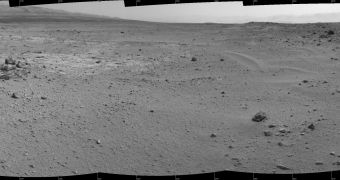Curiosity has been making good progress towards her main target, the slopes of Mount Sharp, where scientists hope to discover more about Mars' evolution from a dynamic and wet planet to the dusty ball it is today, since layers going back billions of years would be exposed.
Still, it's going to be several more months, a year perhaps, before the rover arrives at her destination, and that's if she doesn't find more interesting things to do along the way.
In the two months since Curiosity left for Mount Sharp, she has covered some 1.39 kilometers (0.86 miles) a very respectable distance. But she still has 7.18 kilometers (4.46 miles) to go along the straightest path, which may turn out to be inaccessible.
Thankfully, she may be able to get through the remaining distance faster than so far since her human handlers are now confident enough to leave her to her own devices, quite literally.
So far, NASA operators plotted in advance every move the rover made. They checked to see if the path looked clear and then programed a trail that seemed safe.
Because of the distance to Mars, which varies over several years, radio signals can take tens of minutes to make a round trip, so direct control is out of the question.
Instead, operators plot a course, send the commands to Curiosity, wait for the signal to arrive, then wait for the rover to drive the programed distance and then wait some more for the return signal indicating that the drive is complete.
Obviously, this is time consuming, which is why Curiosity only averages a few tens of meters each day. But on Tuesday, for the first time, Curiosity got to drive on her own over an area that had not been scouted ahead.
"The drive on Tuesday, the mission's 376th Martian day, or 'sol,' took Curiosity across a depression where ground-surface details had not been visible from the location where the previous drive ended. The drive included about 33 feet (10 meters) of autonomous navigation across hidden ground as part of a day's total drive of about 141 feet (43 meters)," NASA explained.

 14 DAY TRIAL //
14 DAY TRIAL //